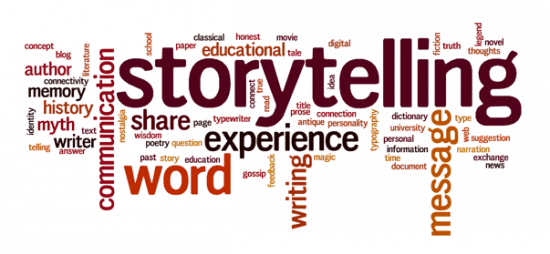What’s Your Story?
Storytelling is muy caliente these days. Perhaps it’s because there are so many vehicles available to convey our stories or maybe it’s because with so much noise out there, the value of a good story to cut through the cacophony has never been more important. But regardless of the time or the medium, storytelling will always endure. From the campfire to the courtroom to the corporation, a good story, well told captivates, commands, and comforts. It connects people and communicates that we are not in this alone, reminding us that while we all have our flaws and foibles, we must still remember to laugh at ourselves and empathize with one another.
Unfortunately the recent emphasis on storytelling has not necessarily correlated to an increase in the quality of the stories we are hearing. Beyond the obvious observations like whenever a person says “To make a long story short”, it is never short, or “I have a funny story to tell you”, it is rarely funny, we are forgetting that stories are more than occasions to convey information, they are opportunities to inspire and share our passion. Here are some tips and suggestions to help improve your storytelling.
Common Storytelling Mistakes
1) Start at the Beginning of Time: We live moment to moment, but we tell a story through a narrative — an account of events and experiences communicated for a specific purpose. When asked to tell more about our products, companies or ourselves, avoid the temptation to start at the beginning with “We started in…” or “I was born in…”. Telling a story by recounting chronological events is the quickest way to put your audience to sleep. Everything has a date of origin. Be unique. Open your story at a pivotal moment, one that will entice and excite your audience. You can always fill in facts along the way.
2) Don’t Make It Personal Enough: Literary stories have a plot, setting, style, and themes, but most of all they have characters. A story without characters is just a description. As the storyteller, we are the link between the topic and our audience. Don’t hide behind the idea, product or brand and tell people what you think they want to hear. Share your connection. Disclose why you believe, what made you believe, and how those beliefs transformed you. The more you reveal of yourself, the more it will dissolve the walls your listeners are hiding behind, deciding if they trust you enough to believe the story you are telling.
3) Talking Too Much: One of the biggest fears of storytellers is to not be understood. The easiest way to mitigate this fear is with words. Inundating with facts and figures, restating our points over and over, and inserting tangential or irrelevant filler are all forms of talking too much. Even when we have honed and practiced our story into a riveting tale, when the lights come on and all eyes turn on us, our brains seemingly rebel and unleash other words and thoughts like a descending swarm. Remember to stay on point. Swat away the new and emerging content and trust the story you crafted. Elongate, don’t shorten the pauses. Your audience needs time to digest the savory, nutritious nuggets you are serving.
Storytelling Checklist
We all know traditional stories have a beginning, middle and an end — an Act I, II, and III. A good story will also be balanced. It will hook and pull in the audience, engage them in the journey, and deliver a reward for their investment. Use the following questions to evaluate whether your story contains the critical elements in the proper structure and flow to fulfill your purpose and satisfy the audience.
Beginning
- What was your goal or mission in starting this journey?
- What happened to finally get you to take action?
Middle
- When did you know there was no turning back?
- What was your greatest challenge along the way?
End
- What did you do to resolve the challenge?
- How will you use what you learned to help other people?
Storytelling is an art that requires practice. Fortunately we have opportunities all day long to improve our storytelling. Whether it’s catching up for coffee with a friend, explaining to our children why they should or shouldn’t do something, or asking our bosses for promotions, we communicate through stories. Try these suggestions to improve your storytelling and let us know what works and what didn’t and any other storytelling tips you recommend.

